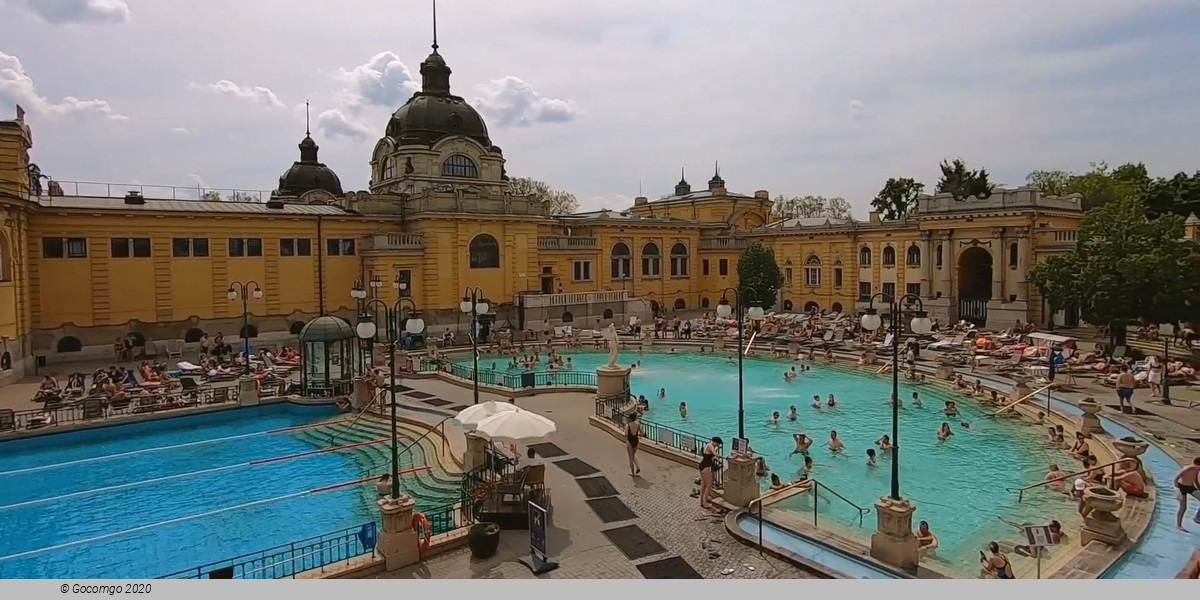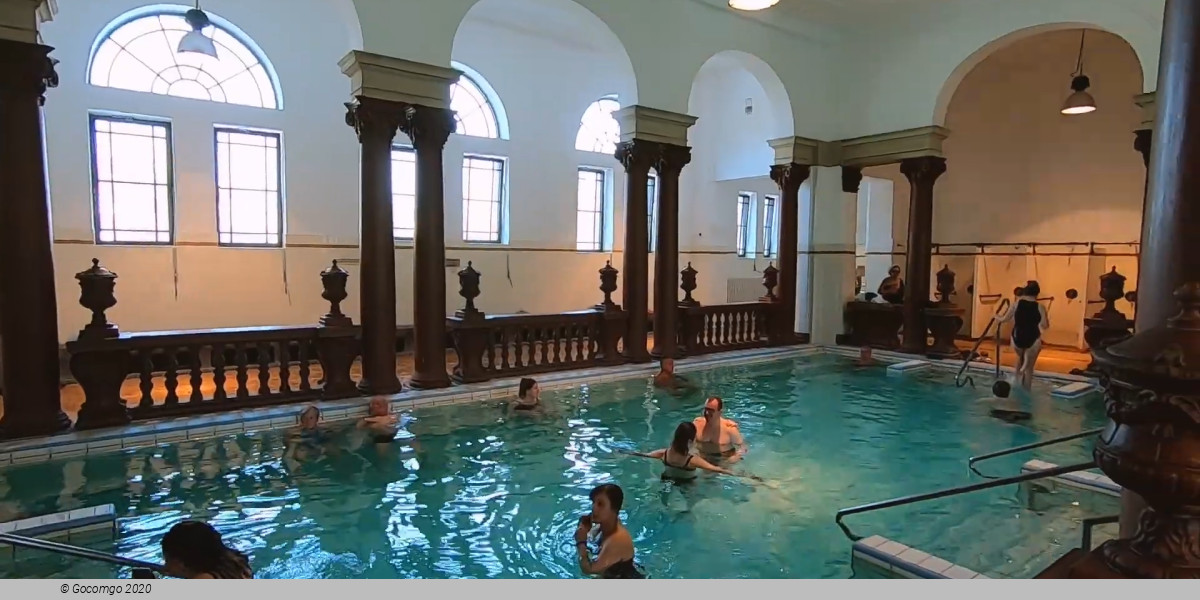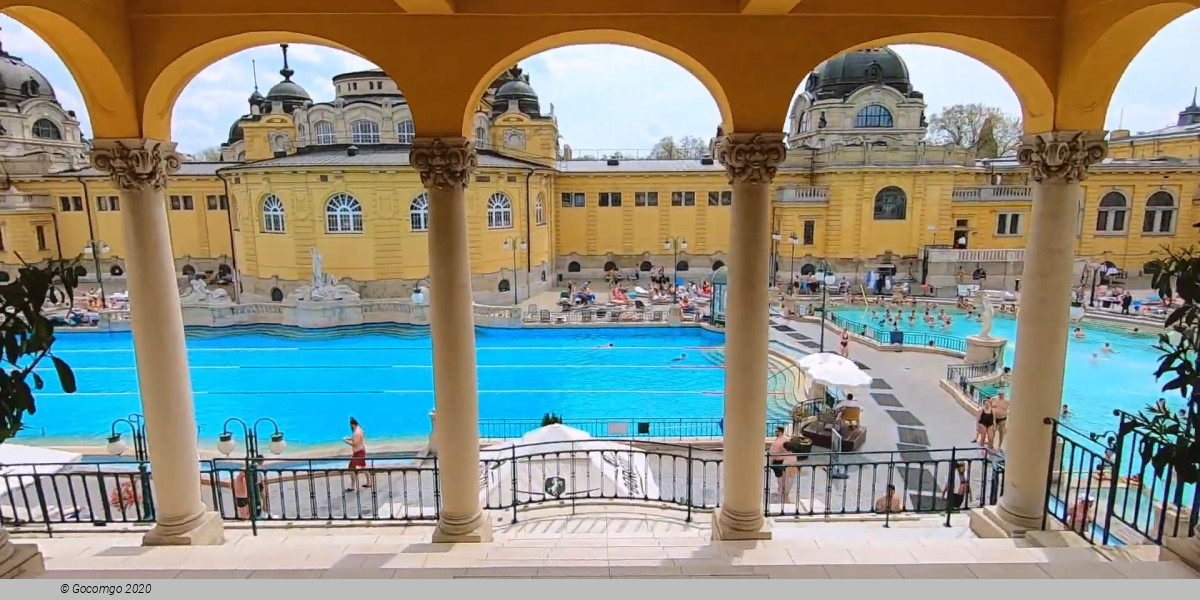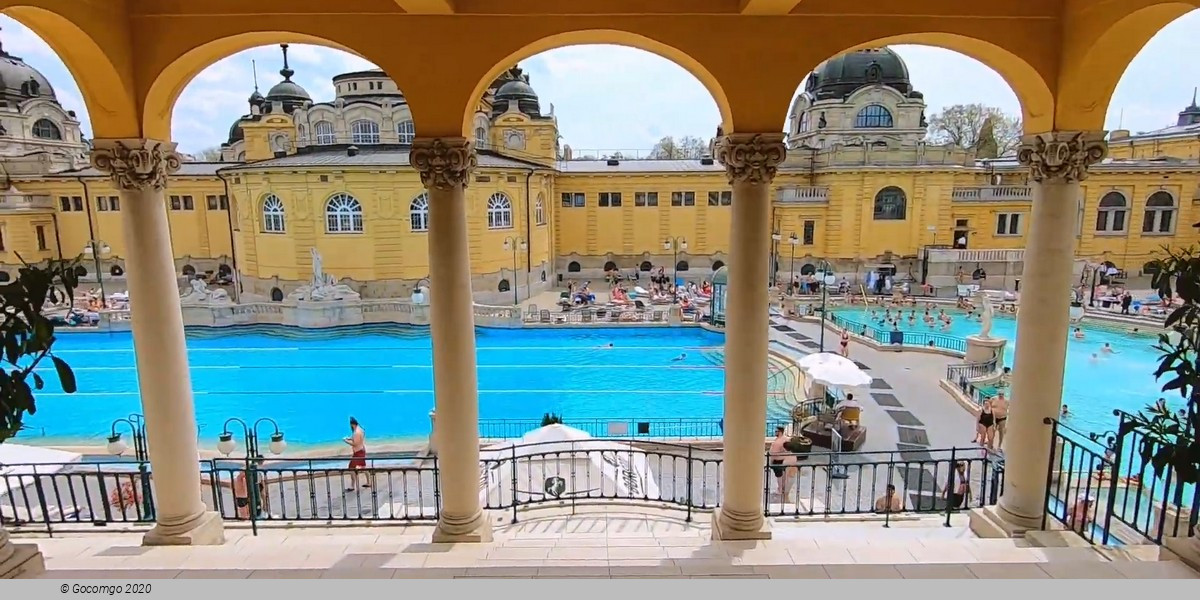Széchenyi Thermal Bath Tickets & Tours
Visit the Széchenyi Spa, the biggest in all of Europe, and enjoy of a relaxation at a spa that was built in 1913 and follows a Neo-baroque style with entry tickets from € 41.
Tickets3 results

Relax in natural hot spring waters, saunas, and outdoor swimming pools with this entrance ticket.
-
All-day ticket
-
Daily tour
-
Instant confirmation

Immerse yourself in the world-famous thermal waters and then try the massages with this entrance ticket.
-
All-day ticket
-
Instant confirmation

Chill and unwind at the Széchenyi Thermal Bath with Palm House Access with this Skip-the-line Entry Ticket.
-
All-day ticket
-
Instant confirmation
-
Skip The Line
Gallery


About
The Széchenyi Medicinal Bath in Budapest is the largest medicinal bath in Europe. Its water is supplied by two thermal springs, their temperature is 74 °C (165 °F) and 77 °C (171 °F). Components of the thermal water include sulfate, calcium, magnesium, bicarbonate and a significant amount of metaboric acid and fluoride.
Opening times:
Tha bath, outdoor and indoor pools
| Monday - Friday | 07:00-20:00 |
| Saturday - Sunday | 08:00-20:00 |
Saunas and hot air chambers
| Monday - Sunday | 10:00-19:30 |
Private SPA
| Monday - Sunday | 08.00-19.00 |
Palm House (Dayspalm)
| Monday - Wednesday | 09:00-18:00 |
| Thursday - Sunday | 09:00-19:00 |
Medical SPA
| Monday - Friday | 09:00-17:00 |
| Saturday - Sunday | Closed |
Drinking fountain
| Monday - Sunday | 09.00-17.00 |
Széchenyi Thermal Bath is one of the largest spa complexes in Europe. It is also the first thermal bath of Pest. It owes its existence to Vilmos Zsigmondy, a mining engineer.On his initiative, successful deep drillings had been performed in the City Park, where later in 1881 already an "Artesian bath" was in operation.However, this temporary type of bath was meeting the demands of the age less and less, so Széchenyi Thermal Bath was built in 1913 on the basis of plans composed by Gyozo Czigler.
The bath was expanded in 1927 with a public bathing department for gentlemen and ladies and an outside part. In the middle of the 1960s, further transformations took place, including the creation of another thermal section in bathing suits, as well as a daytime hospital (complex physiotherapy department).
The reconstruction of the pools of the swimming section, their equipment with water filtering and circulation devices was completed in 1999.The so-called fancy bath includes a whirling corridor, underwater effervescence production, neck shower, water beam back massage installed in the sitting banks and many other services.

